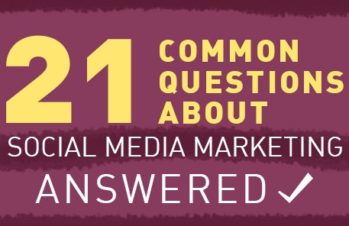There are less than 30 days until 2013 arrives, and most of the planning and budgeting for the new year’s marketing campaigns have long been completed. But the last few weeks of the year are a good time to take a second look at your plans and tweak them to expand your social media reach in 2013.
Once considered strictly a consumer-oriented communications channel, 2012 is likely to be remembered as the year in which B2B companies began to master the art of social selling. It may also be remembered as the year in which Facebook, Twitter, and LinkedIn became routine communications channels that are treated as part of a cohesive marketing communications campaign rather than stand-alone efforts.
For 2013, it’s time to shift your attention to a broader, more integrated communications strategy that combines blogs, social networks, wikis, industry forums, online communities, image sharing (Pinterest, Instagram), paid media, email marketing, SEO and public relations. Chances are, you’ve already started that process, but if not, it’s time.
Here’s a checklist of 5 steps you can take now to expand your social media reach in 2013. Of course, you may not need to take all of them – and you certainly don’t have to take them all at once. More importantly, you don’t have to do it alone. Call us if you need help or advice – helping clients maximize their results is what we do!
1. Clearly Define Goals & Objectives
What do you want to achieve? The list of reasons to engage in social media is long, but not every reason is equally important to every business. Brand development and management, delivering product and company information so that prospective and current customers can find it easily when they begin researching a purchase, and engaging with customers at different stages of the selling cycle are probably on most marketing priority lists. But what’s most important – driving new business traffic, or developing a loyal, engaged customer base among existing customers? New product trial or defending the position of a current product line in a changing market?
Until your priorities for social media engagement are set, it isn’t easy to identify the most important social media channels for your marketing messages.
Before the first tweet of the New Year goes out, define the measurement criteria you’ll be applying when it’s time to measure results.
2. Target Audiences Where They Hunt
You already know the statistics. 800 million people use Facebook every day, 82% of women use Pinterest when planning a home remodeling project, 100 million working adult men visit LinkedIn every week and so on. But what do those numbers mean to your business?
The buying process and fundamentally changed thanks to social media and both B2B and consumer prospects research purchases online before they make a buying decision. Where do your customers go when they are considering a purchase?
Failing to focus your social media time and spending specifically on the online communities where your customers are searching for information during the buying cycle can be costly. So make sure you’re targeting your prospects in the places where they’re hunting for information. How? For most companies, it starts with search marketing (mobile and web), followed by a multi-channel marketing communications effort that includes social media, email marketing, and PR.
3. Blend Earned, Owned and Paid Media Effectively
Forrester Research analyst Sean Corcoran has one of the best definitions of earned, owned, and paid media you’ll find online. Corcoran says that companies need all three, and we agree.
Earned media used to be what PR people called free publicity (as opposed to paid advertising), but the term has evolved to mean that kind of ongoing word-of-mouth that brands earn through social media. Turning your customers into brand ambassadors – the way Apple, Amazon, and even Patrón brand tequila have – is the dream of most marketers. What are you doing to encourage your most loyal customers to help you spread the word?
Owned media – that is media that you control such as your website, blog or YouTube channel – can’t be underestimated. Is your owned media optimized for mobile and web search? Are you using it to its full potential to engage and motivate customers? Do you understand the analytics and statistics available – and are you taking a pro-active role in regularly improving them?
Paid media was once defined solely as advertising (print, broadcast, banner ads, and pay-per-click campaigns), but that definition has expanded dramatically this year. 2012 has seen promoted tweets and Facebook posts, sponsorships, promoted trends, and a host of other new opportunities for brands to incorporate earned media content in their paid placements achieve acceptance among marketers and customers alike.
Paid media has always offered the targeting capabilities brands want – while the trust associated with earned media amplifies user generated content in a way that paid media couldn’t. Now, the ability to combine the two in social networks offers an unprecedented chance to test ideas and concepts – if they resonate with the audience in earned media, it’s likely to translate well in paid media, too.
Combining your strategies – and making sure that your advertising, PR, and social media teams are working together toward a common goal – may be the “big idea” for 2013.
4. Nail Down Ownership & Policy Questions
During 2012, the National Labor Relations Board, federal and state courts, and a number of regulatory agencies like FINRA, the Federal Trade Commission, and the FDA have all issued new guidelines that govern the ways companies and their employees use, monitor, and control social media. So if you haven’t reviewed your social media and acceptable use policies lately with the help of a law firm that has an expertise in social media, add this to your checklist now.
Even if you don’t do business in a highly regulated industry, some of the changes and legal opinions may affect you. For instance, courts are split on the ownership question of LinkedIn accounts used in part to reach company prospects, vendors, and customers. Do you have a contract in place with your key sales and marketing employees about company contacts added to their social media accounts? What about your executives, purchasing agents, and human resources staff?
Social media policies – that is defining who speaks for the company, and what employees can and can’t say in social media – have become hot-button issues in recent months. NASCAR, Dish Network, and The National Association of Realtors (NAR) are among the organizations that have found it necessary to change or update their social media pppolicies in recent weeks due to legal or regulatory challenges.
No matter how small your company is, it’s vital to take time to clarify who owns social media accounts and consistently enforcing a policy on who speaks for the company in online forums, as well as spelling out the company’s policies on trade secrets and other proprietary information. Social media litigation is increasing rapidly, and the laws governing it haven’t kept up with the technology – so winding up in court is almost certain to be costly, and the outcome of a case that looks simple can be uncertain as judges and juries struggle to understand the issues.
5. Measure & Monitor Like a CEO
You know that measuring social media marketing results requires ongoing monitoring, and that adjusting your focus and your message based on that monitoring is essential to get the return on marketing investment (ROMI) that your company wants. But did you know that CEOs and top marketing executives often have a very different view of what kind of measurement and monitoring you need?
Forrester Research recently published a new report called Social Media Metrics That Matter, that defined three different sets of measurement and monitoring metrics. One set is designed for the C-suite, one for top marketing managers, and the other for day-to-day marketing employees. Does that kind of segmentation really make sense for a mid-size business?
We think so, because by measuring and monitoring your social media marketing like a big corporation’s CEO, you’re focusing on the results (sales, conversions, revenues, lifetime value) that allow you to monetize your social media marketing efforts.
One of the differences between measuring results from a marketing perspective and from the CEO’s perspective is the timing of your analysis. As a marketer, you need to measure the results of every campaign as quickly as possible, so near real-time reuslts are vital. As a CEO, you need to take a longer-term view, and look at results quarterly or annually. Why? Because purchase intent and actual purchase aren’t always instant. A prospective customer may be persuaded by a campaign – but wait to make the purchase until some milestone that you can’t predict such as their budget or special event (birthday, holiday, annivarsary, etc.).







